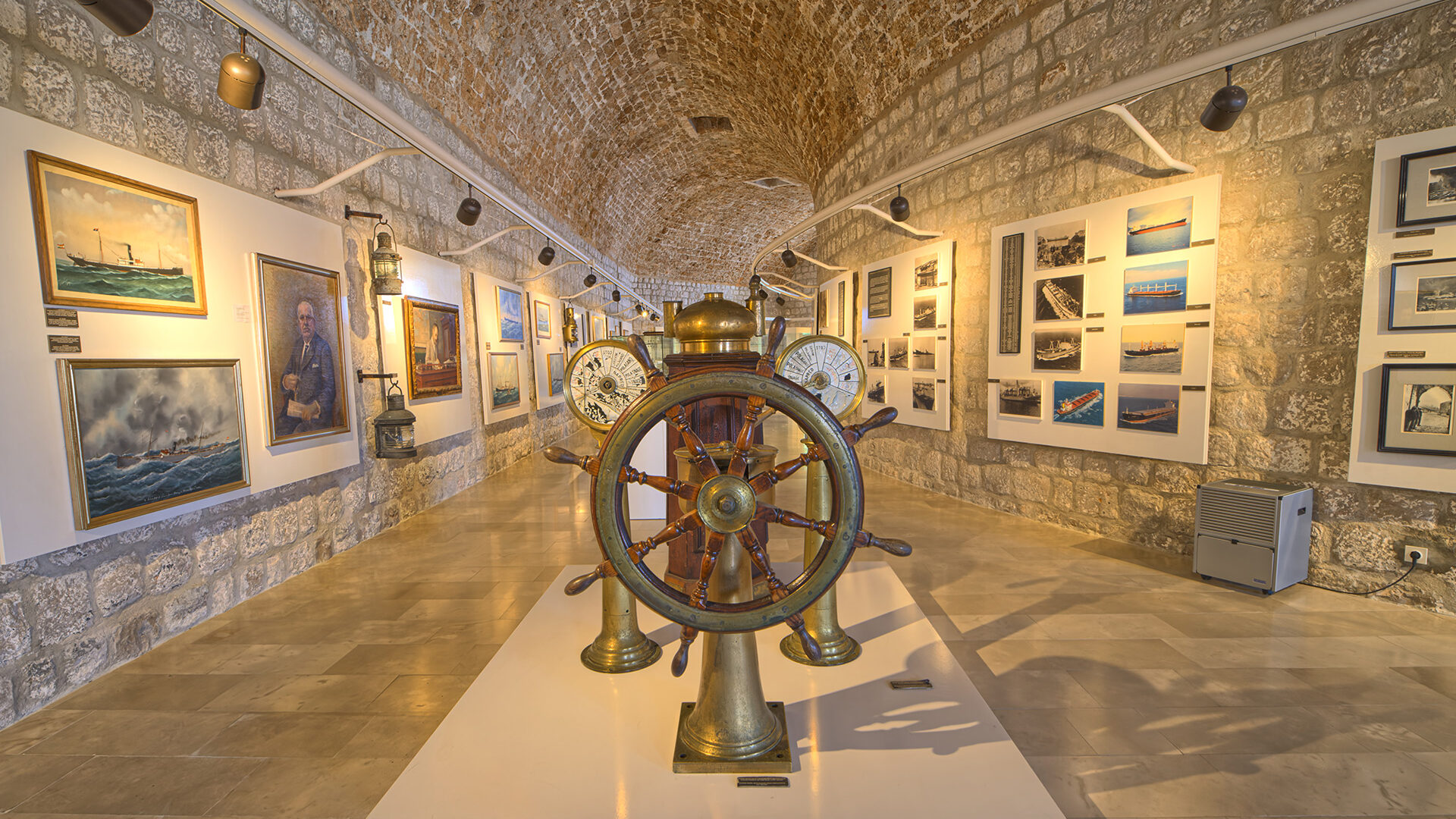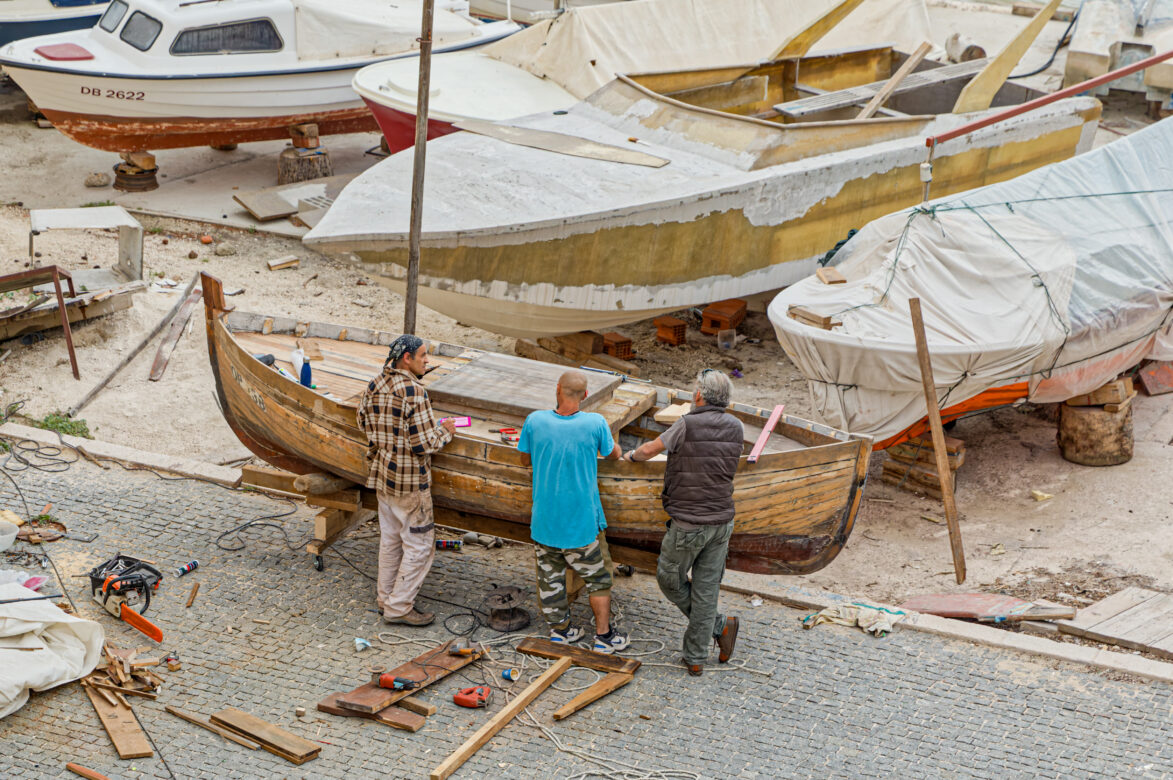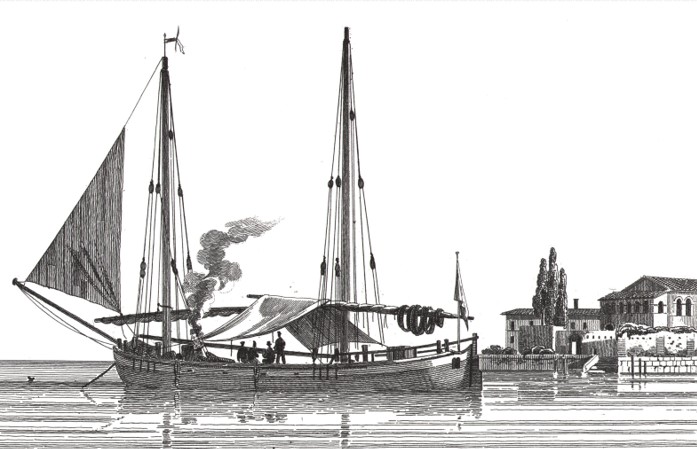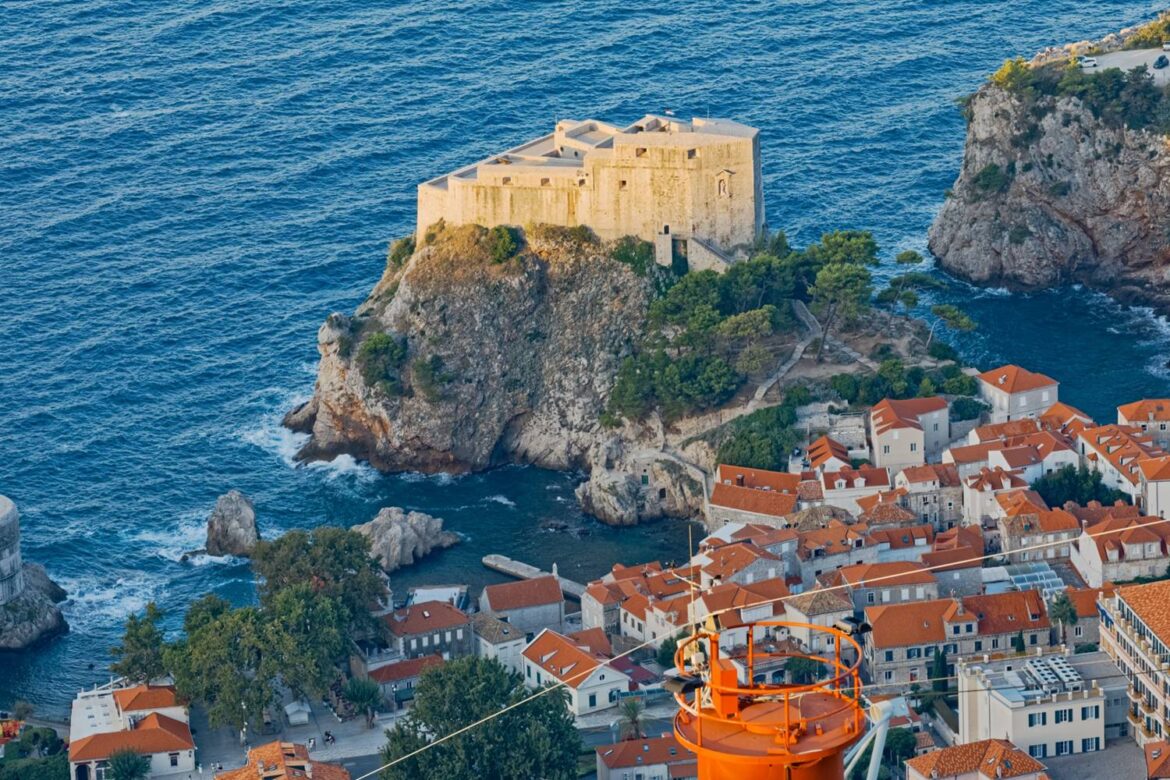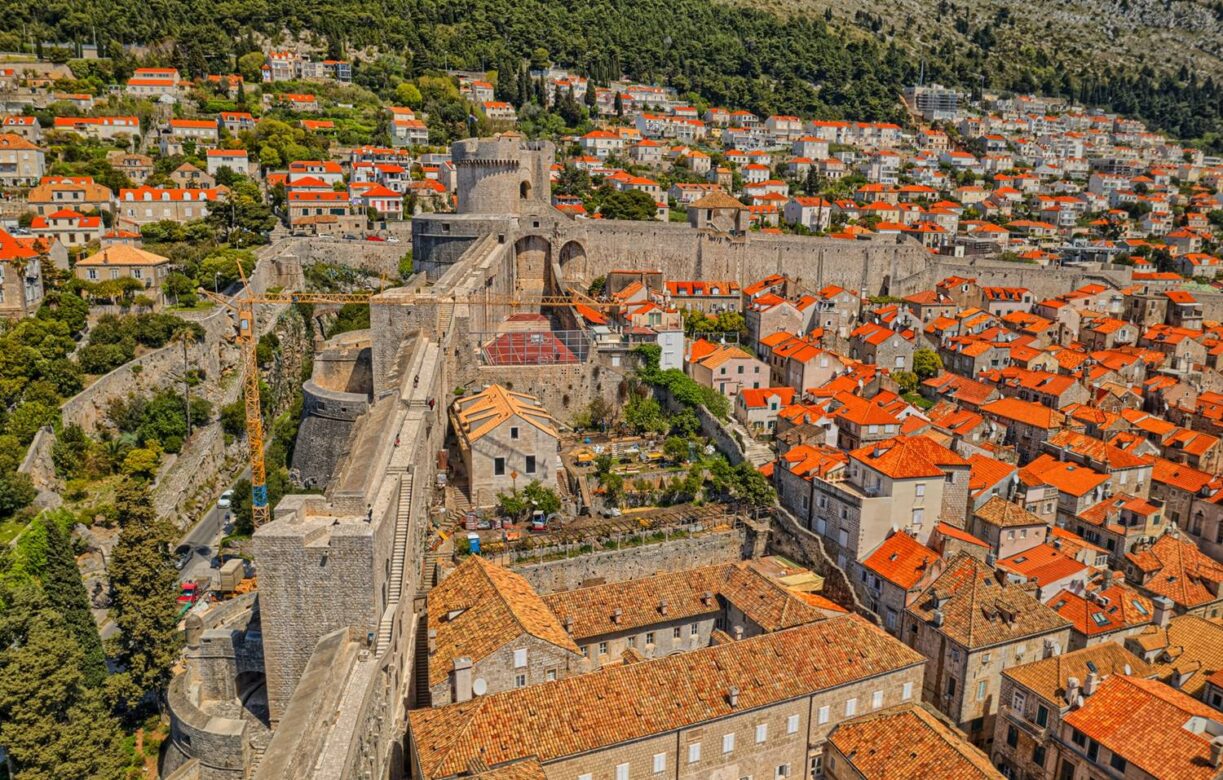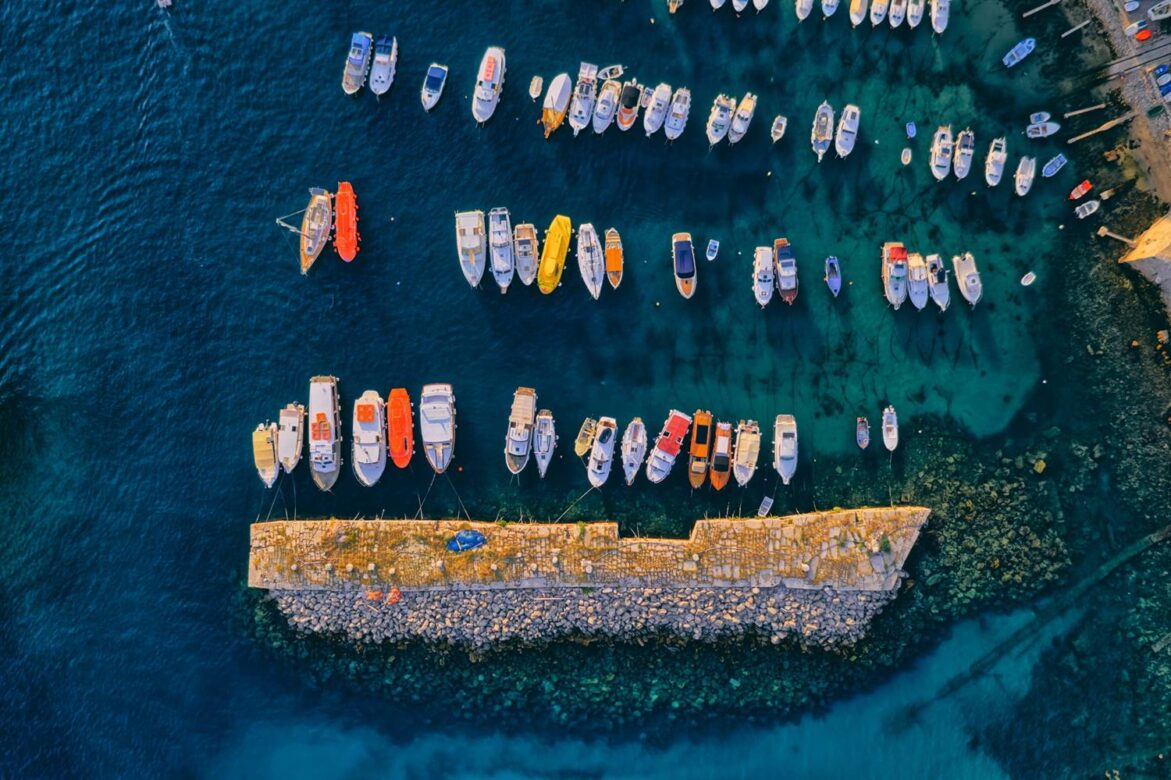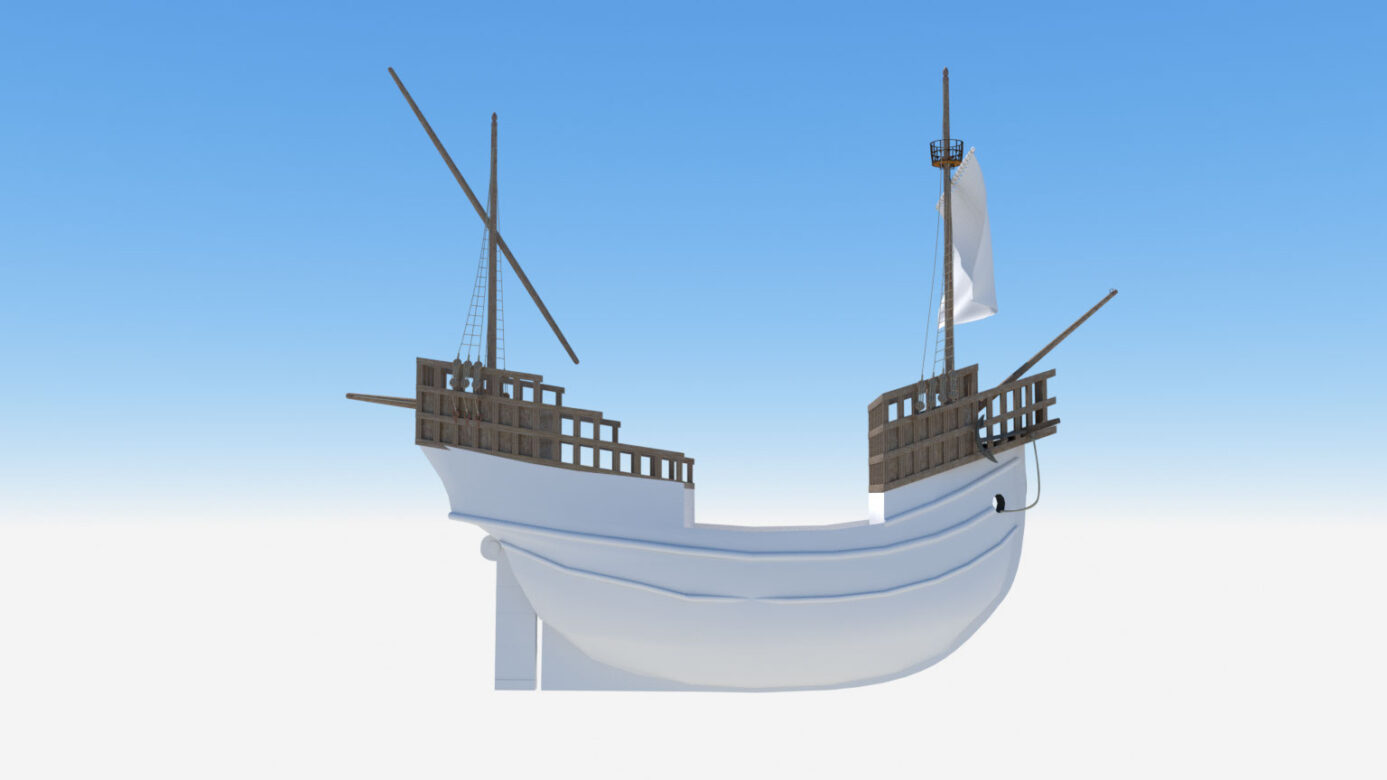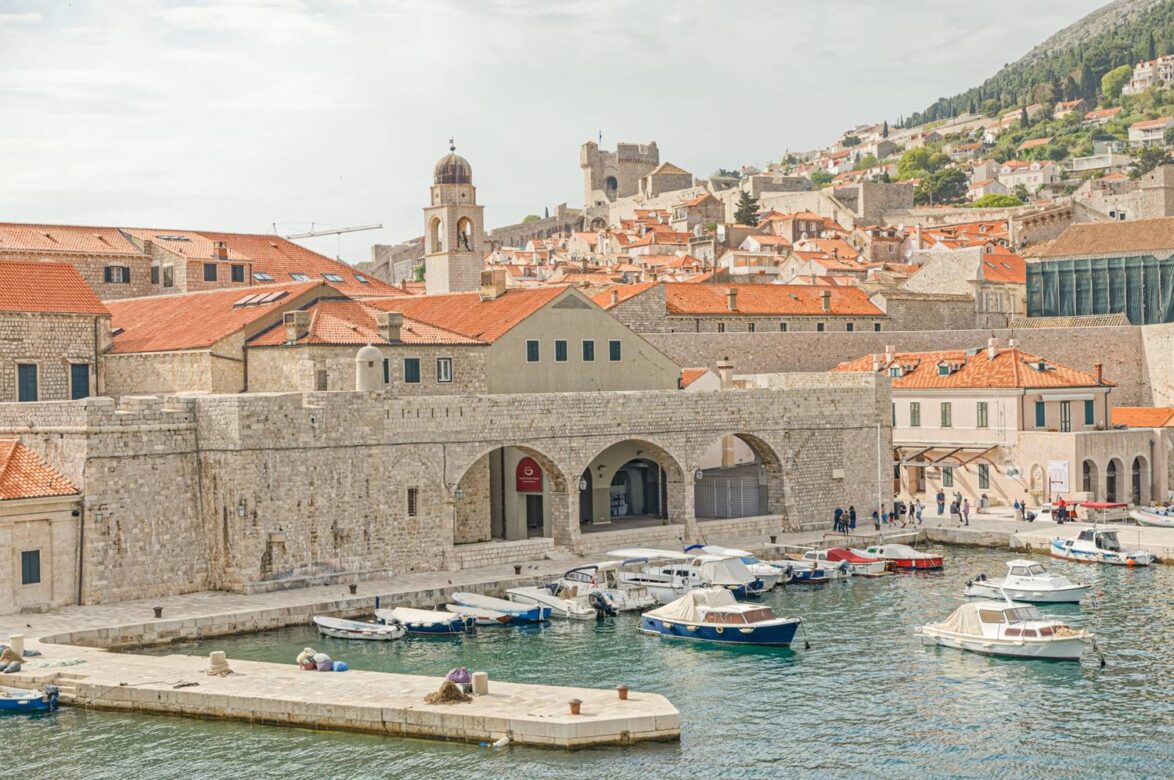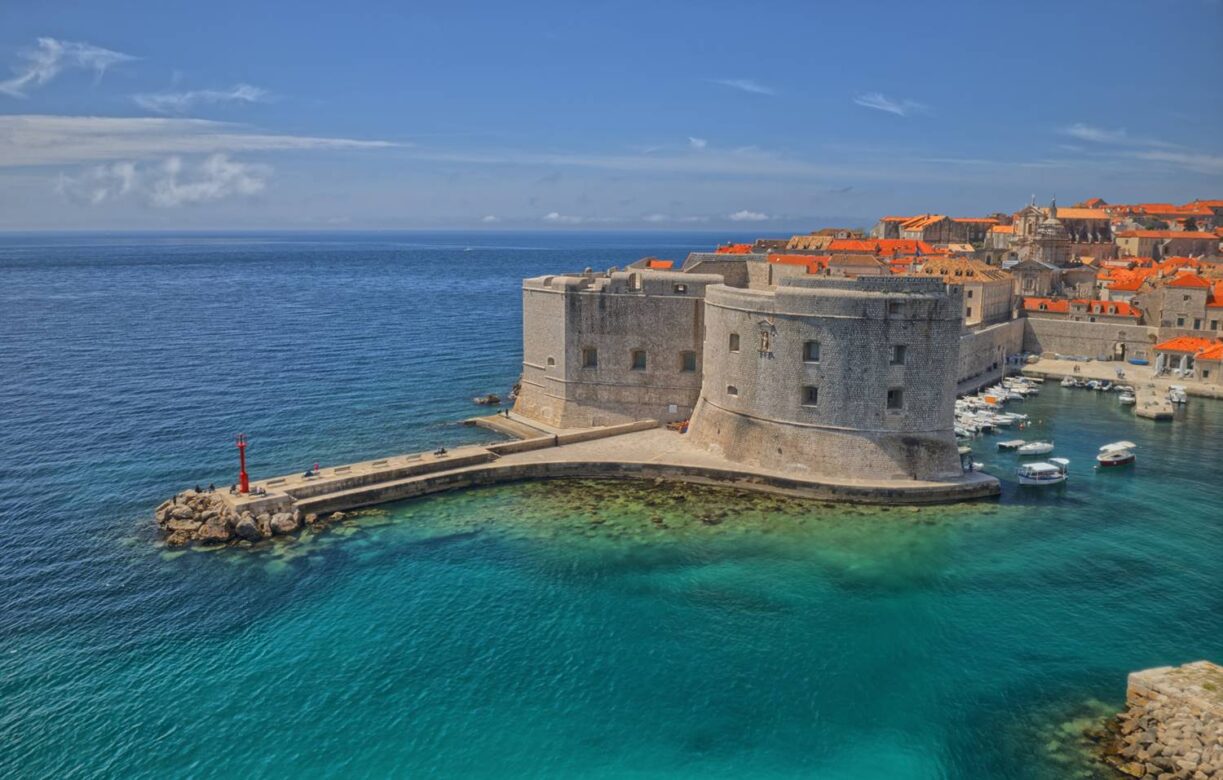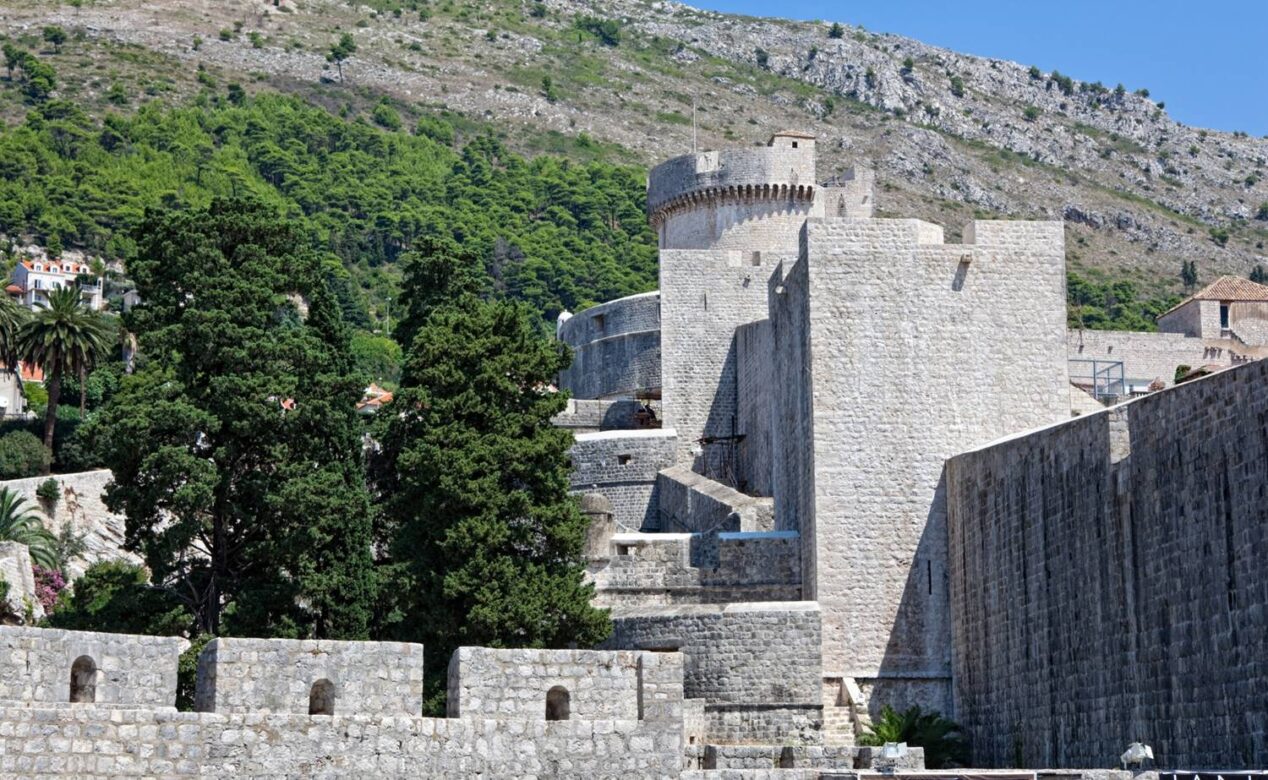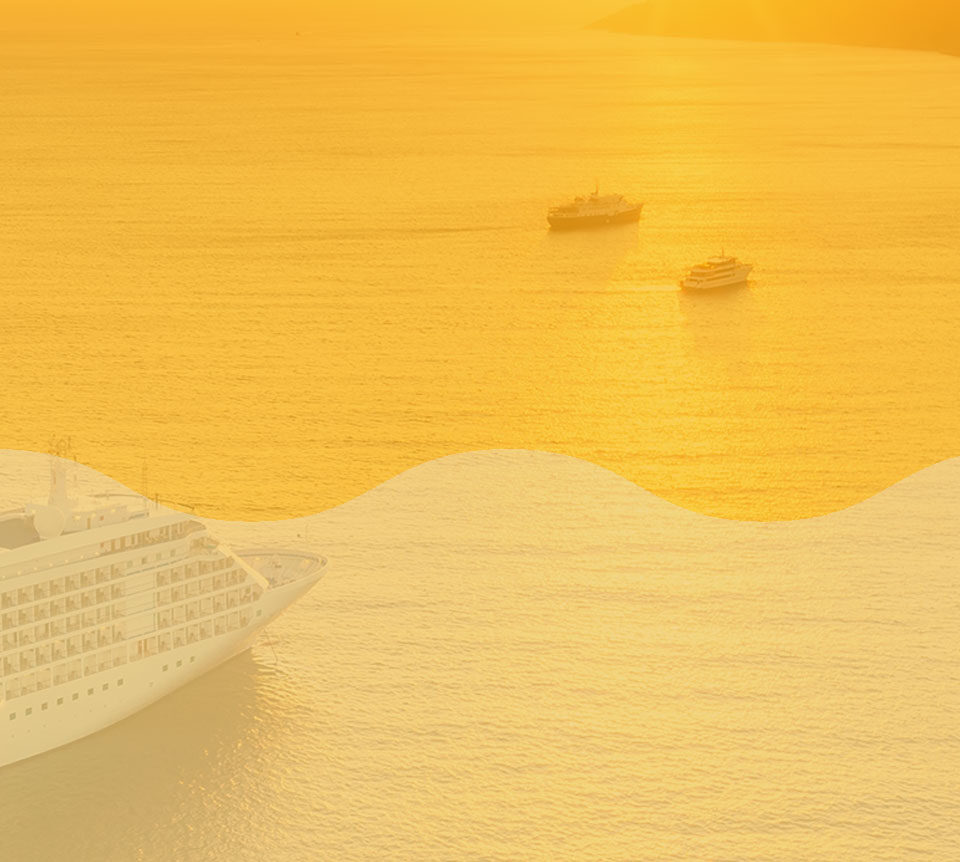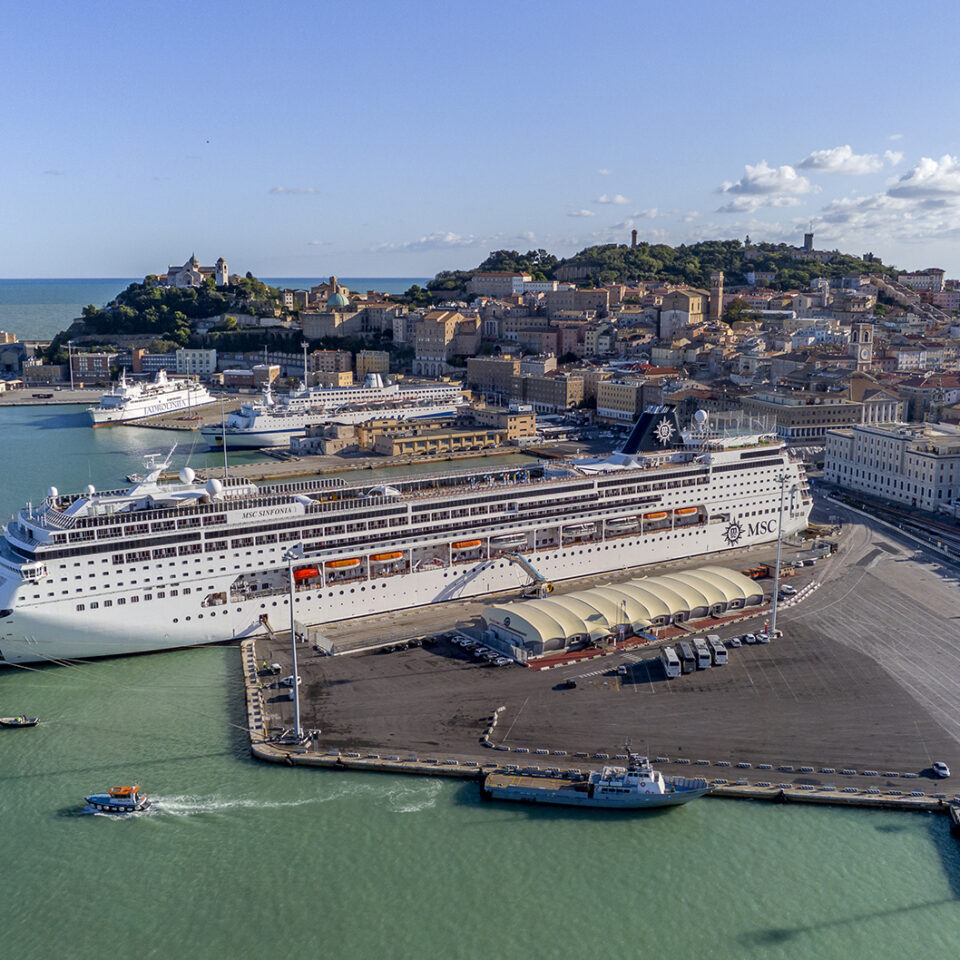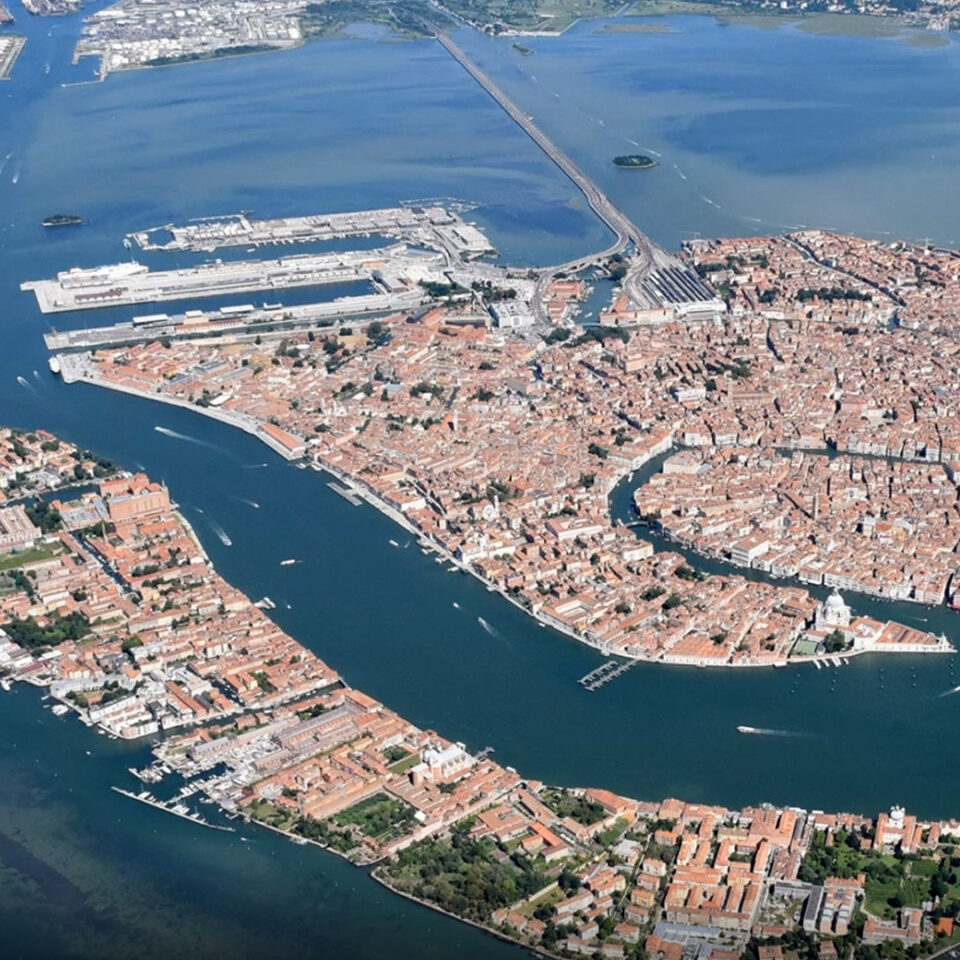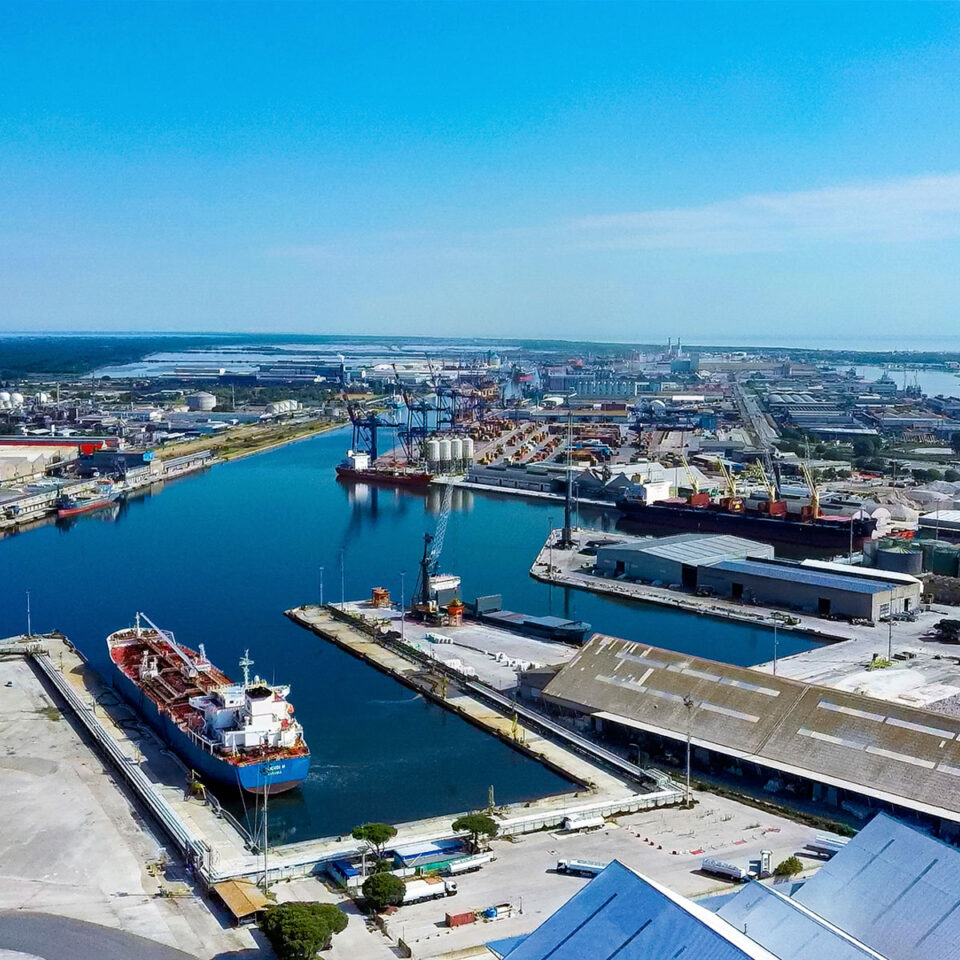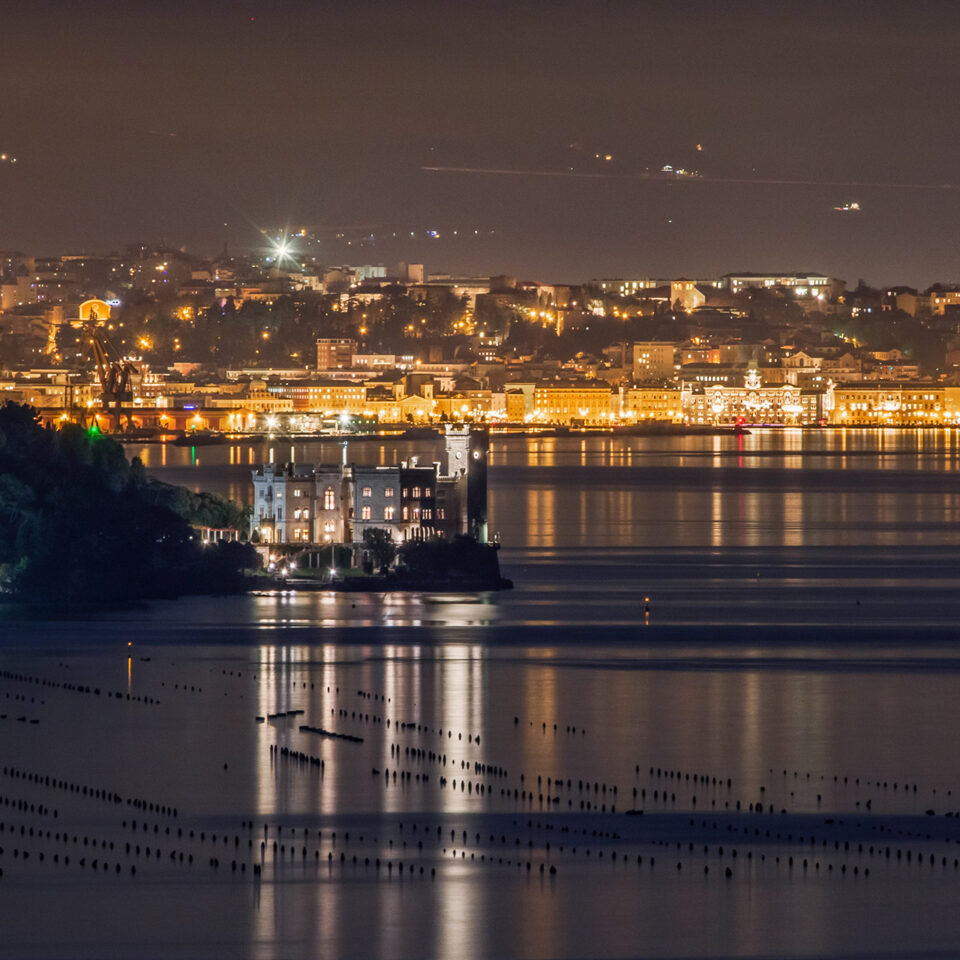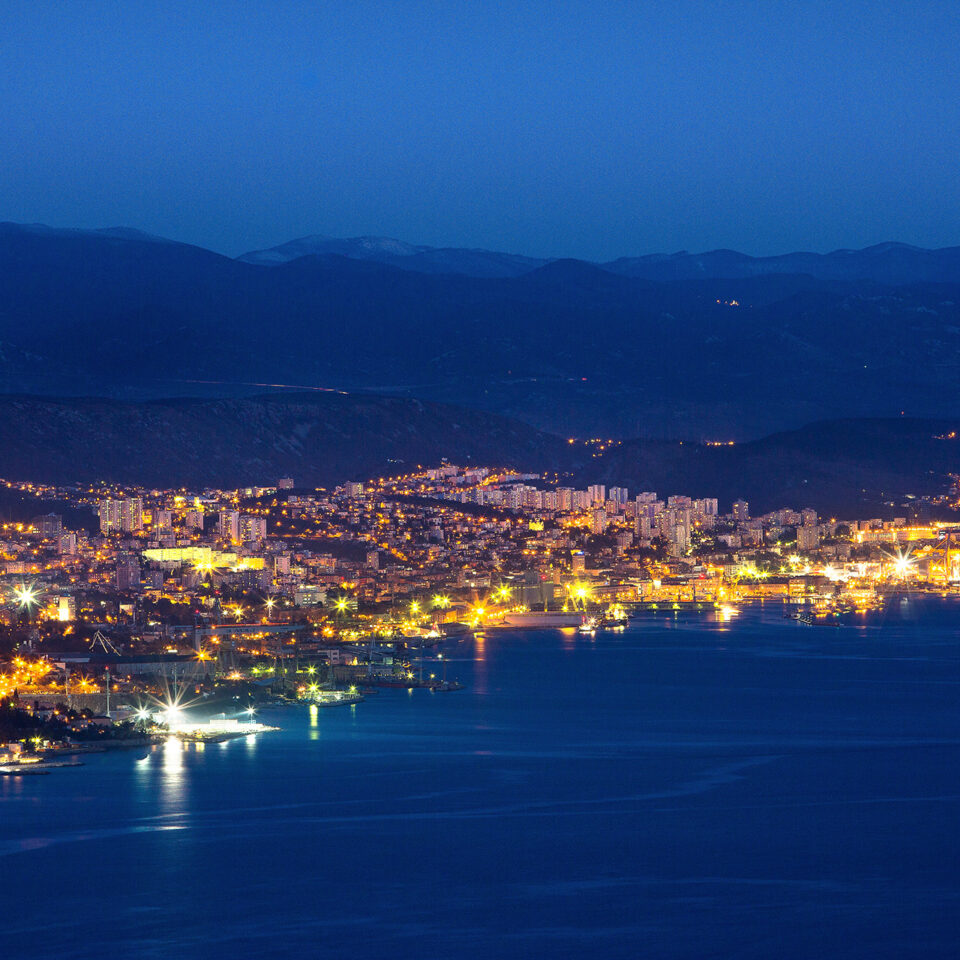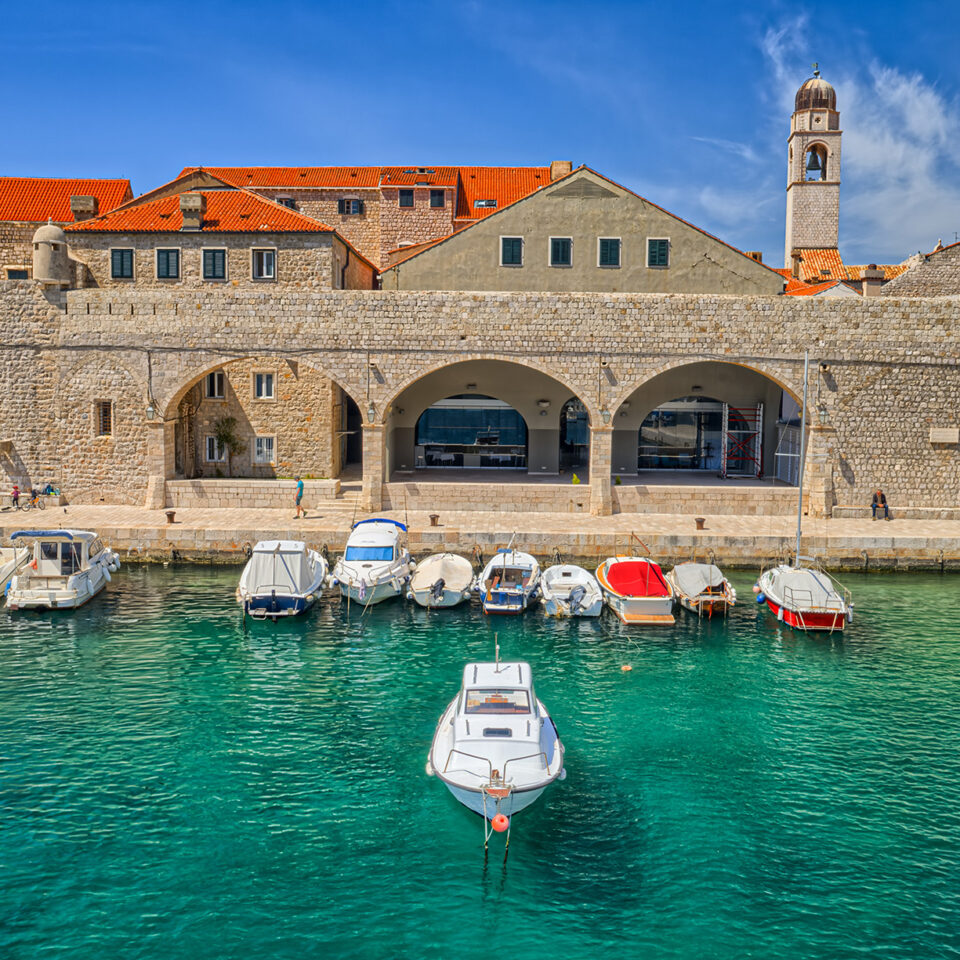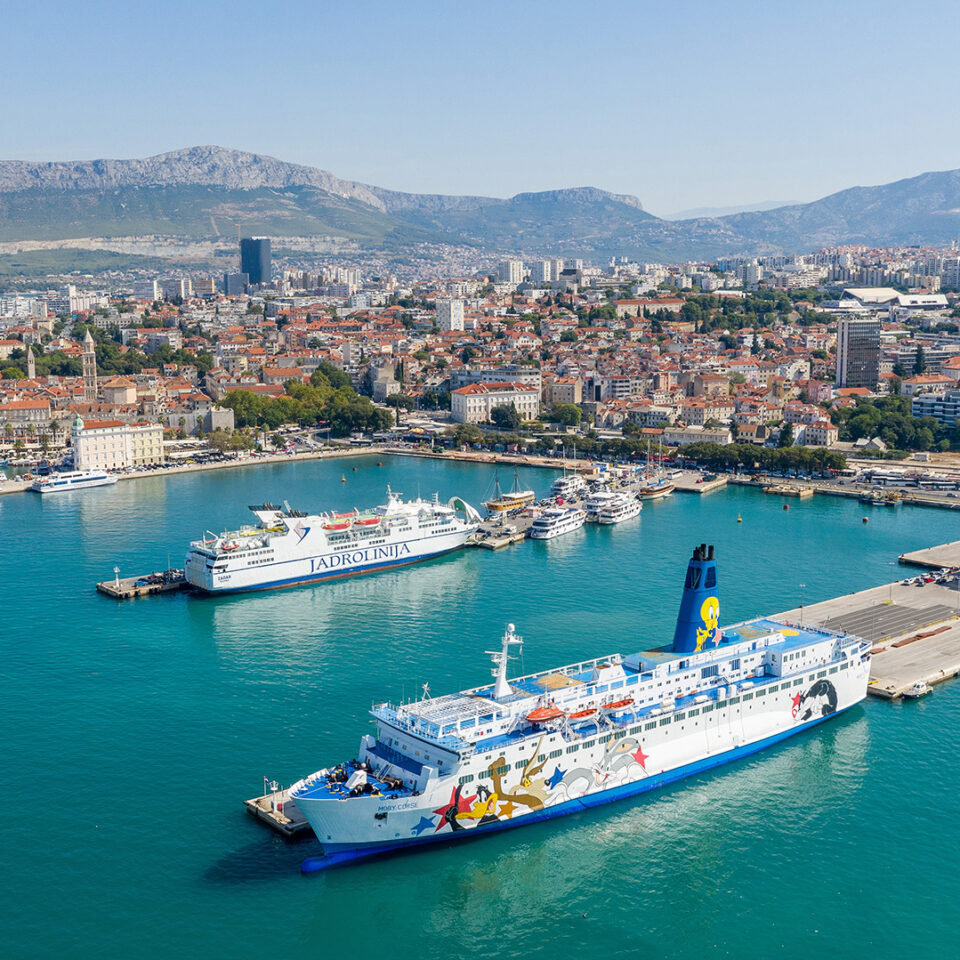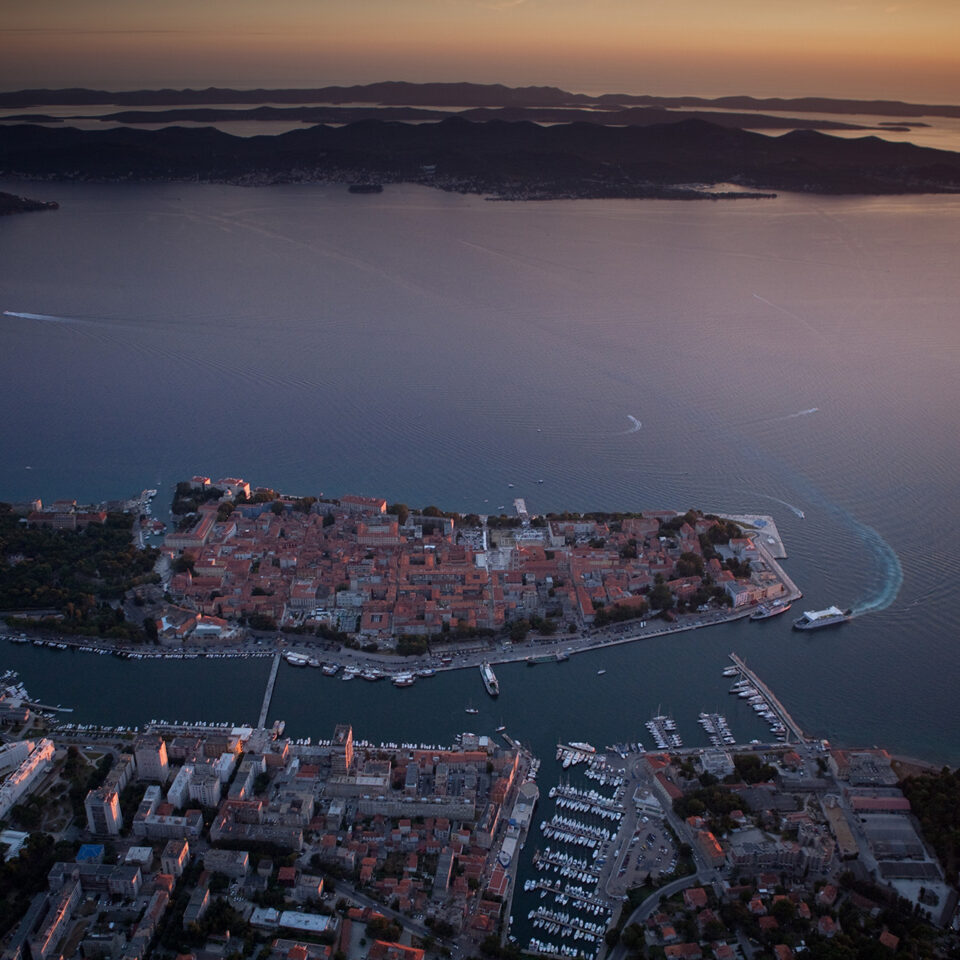There were a number of shipyards in the Dubrovnik area: larger ones were in the town of Suđurađ on the island of Lopud and on the island of Šipan,
Dubrovnik's maritime routes continued along continental routes. Without the deep inland territories of the Balkans, the maritime trade routes would
Lovrijenac is a freestanding fort in the part of the city known as Pile. It is erected on top of a 37-meter high cliff, and is named after St.
The present-day walls of Dubrovnik, in their full extent, were erected in the 13th century, with other extensions added periodically until 1660. The
The Kaše breakwater protects the town port from southern and eastern winds. Local architect Paskoje Miličević designed the breakwater which was
The carrack was a merchant vessel, and the largest cargo sailing ship in the 15th and 16th centuries. The carracks were armed with forty cannons to
Dubrovnik is the most important historical port of the eastern Adriatic. Its geographical position in the open sea of the southern Adriatic Sea and
St. John's Tower was the main fortification for the defense of the historic port of Dubrovnik. The city port was closed off with a chain, and this
Minčeta Tower is the tallest edifice in Dubrovnik's fortification system. This circular tower is topped with corbel-supported crenellations.
Explore the map and zoom on the ports to discover the Points Of Interest by category
Traditions & Cultures
Stories
Heritage

